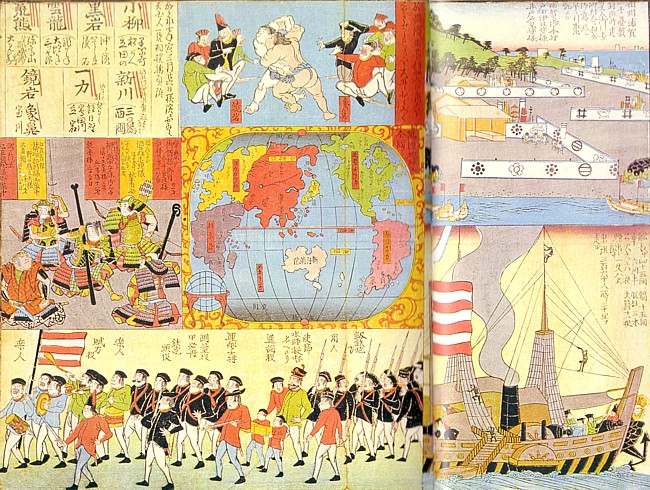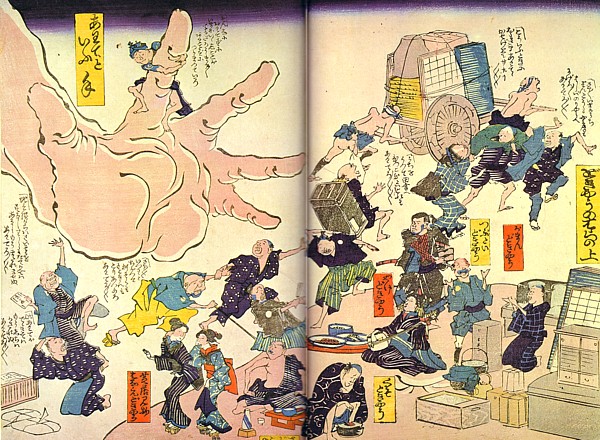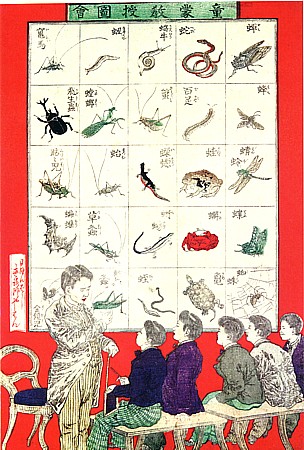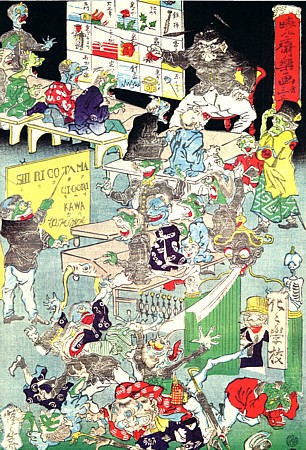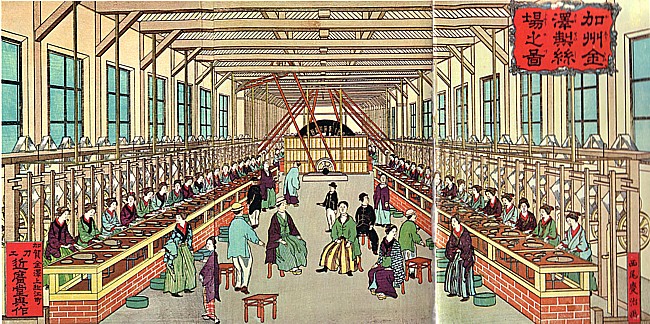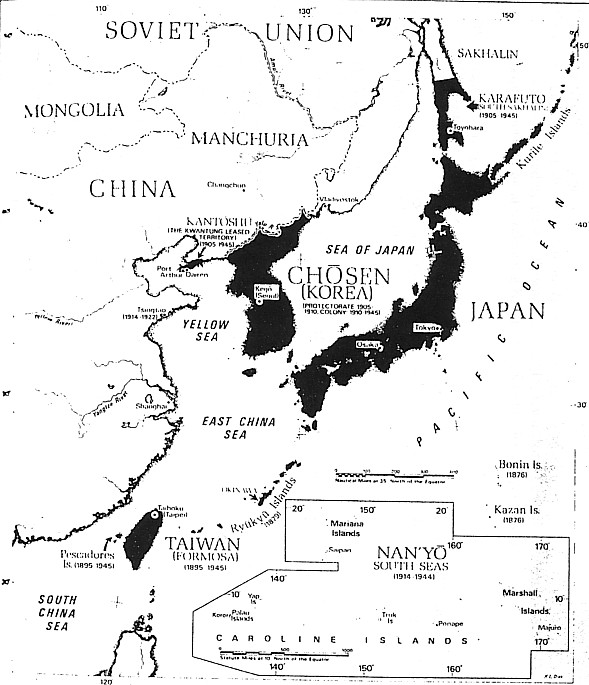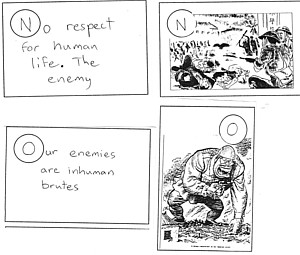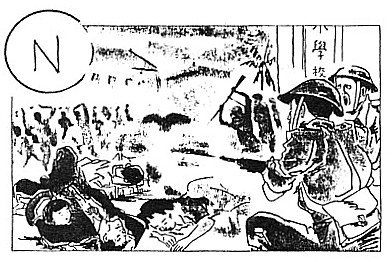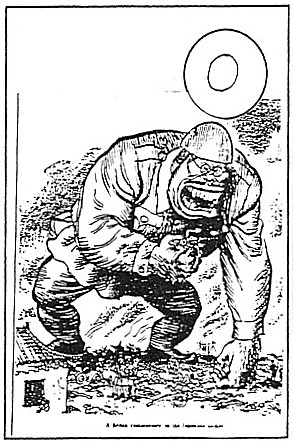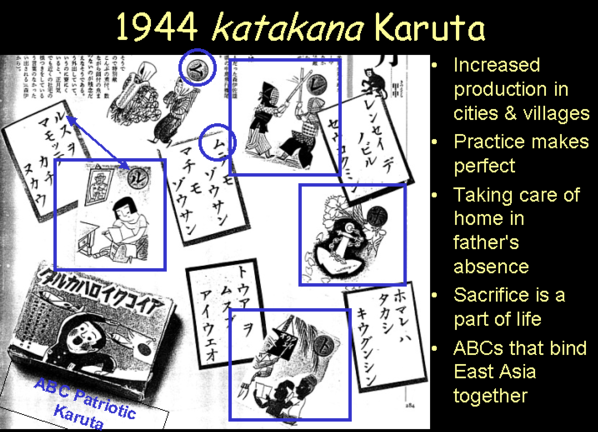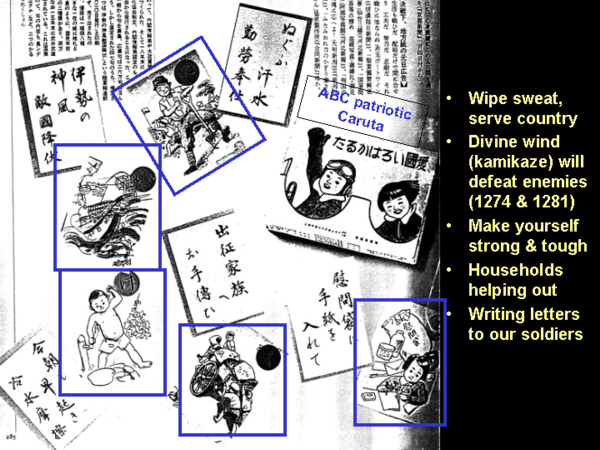| 1.
China prior to the 1830s: A World Superpower (back
to top)
Before the age of European global exploration, namely in the early 1400s,
China was vastly superior in its political, cultural and social organization
to Europe. The textbook (Tignor p. 64f) illustrates the relative size
of one of Zheng He's ships (ca. 1400) and one of Columbus's almost a century
later:
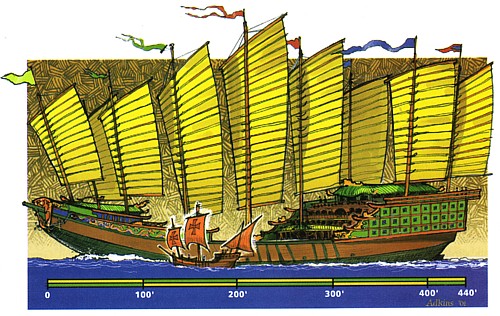
The  Chinese
ship had 4x the length and 9x the cargo capacity. Whereas Columbus had
100 men in his 3 ships, in Zheng He’s retinue there were 868 civil officers,
26,800 soldiers, 93 commanders, two senior commanders, 140 millerions
(captains of a thousand men each), 403 centurions, a Senior Secretary
of the Board of Revenue, a geomancer (who divines information from earthly
signs), a military instructor, two military judges, 180 medical officers
and assistants, two orderlies, seven senior eunuch ambassadors, ten junior
eunuchs and 53 eunuch chamberlains, Chinese
ship had 4x the length and 9x the cargo capacity. Whereas Columbus had
100 men in his 3 ships, in Zheng He’s retinue there were 868 civil officers,
26,800 soldiers, 93 commanders, two senior commanders, 140 millerions
(captains of a thousand men each), 403 centurions, a Senior Secretary
of the Board of Revenue, a geomancer (who divines information from earthly
signs), a military instructor, two military judges, 180 medical officers
and assistants, two orderlies, seven senior eunuch ambassadors, ten junior
eunuchs and 53 eunuch chamberlains,
Amateur historian Gavin Menzies wrote a book arguing that Zheng He's
fleet even discovered the Americas before the continental Europeans did:
1421: The Year China Discovered America (2002; $10
on amazon, also available: DVD of a PBS TV documentary).
- As an aside: critically examining the evidence presented in that
book would be an appropriate topic for the second paper.
- A more serious book on Zheng He's voyages is: Louise Levathes, When
China Ruled the Seas : The Treasure Fleet of the Dragon Throne, 1405-1433
(1997, $10
at amazon)
The textbook also includes a map of Zheng He's documented voyages:
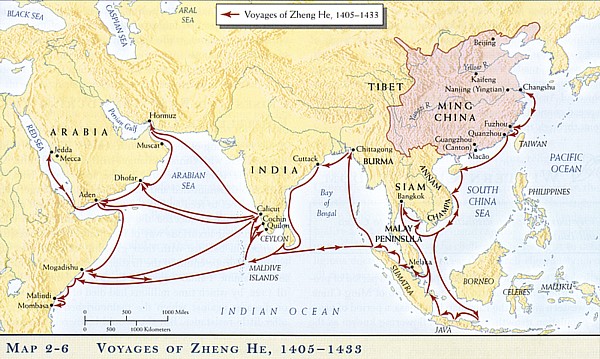
How did China rank in the following centuries? I reminded of the readings
in textbook chapters:
5. Cultures of Splendor and Power (pp. 172-175), and
6. section "Persistance of the Qing Empire" (pp. 230-235)
Together these cover the rise and fall of several Chinese Dynasties:
- Mongol Yuan Dynasty (1271-1368)
- Ming Dynasty (1368-1644)
- prosperity in: textbook pp. 115f
- downfall/transition to Qing: pp. 141-146
- Manchu Qing Dynasty (1644-1911) [Manchuria: NE China,
towards Korea & Japan]
- expansion with additional arable lands and new crops (rice from
SE Asia, sweet potatos from Americas) -> led to demographic change
(remember L3-4 about causes of the IR?)
150 mio. population ca. 1650 doubled to 300 mio. ca. 1800.
- Long-serving emperors brought stability:
Kangxi (1661-1722) [note:
I had the first date wrong in the ppt]
Yongzheng (1722-1735): banned opium (in an opium-tobacco
blend) in 1729
Qianlong (1736-1796)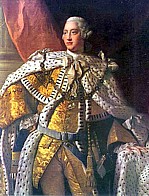 
- Lord Macartney's mission, 1793: British textiles, cutlery, pottery,
clocks, scientific gadgets, musical instruments, vs. Chinese tea,
silk, porcelain. Nothing the Chinese wanted.
- The Canton System continued unabated (text
& explanation by John O'Brien, John Jay/CUNY):
- Canton=Guangzhou: 13 "factory" warehouses on riverbank
- trading pattern between Chinese and foreign merchants, primarily
1759-1842
- all foreign trade highly regulated and confined to Canton
- tea, rhubarb, silk, spices, handcrafts
- similar to mercantilism of Europe and its colonies
- drain of silver from European sources (since 1600s)
So how did contemporary China and Europe compare? For example compare
Emperor Zhu Di's "Forbidden City" (1421-) to Louis XIV's Versailles
Palace (1661-):
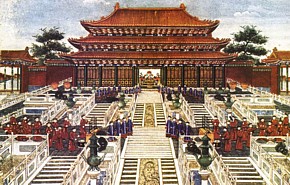 |
need Versailles palace image 290x185px |
Random facts: China is about the size of the United States, including
Alaska, but it has more than four times the population (1300 million vs.
300 million). Clear
overview map of China at enchantedlearning.com. In 1801 China's population
was the same as the US's in 2001.
|
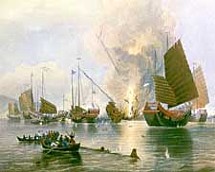
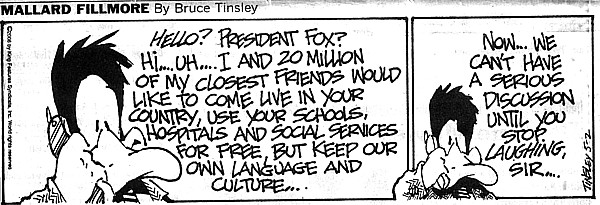

 Chinese
ship had 4x the length and 9x the cargo capacity. Whereas Columbus had
100 men in his 3 ships, in Zheng He’s retinue there were 868 civil officers,
26,800 soldiers, 93 commanders, two senior commanders, 140 millerions
(captains of a thousand men each), 403 centurions, a Senior Secretary
of the Board of Revenue, a geomancer (who divines information from earthly
signs), a military instructor, two military judges, 180 medical officers
and assistants, two orderlies, seven senior eunuch ambassadors, ten junior
eunuchs and 53 eunuch chamberlains,
Chinese
ship had 4x the length and 9x the cargo capacity. Whereas Columbus had
100 men in his 3 ships, in Zheng He’s retinue there were 868 civil officers,
26,800 soldiers, 93 commanders, two senior commanders, 140 millerions
(captains of a thousand men each), 403 centurions, a Senior Secretary
of the Board of Revenue, a geomancer (who divines information from earthly
signs), a military instructor, two military judges, 180 medical officers
and assistants, two orderlies, seven senior eunuch ambassadors, ten junior
eunuchs and 53 eunuch chamberlains,



